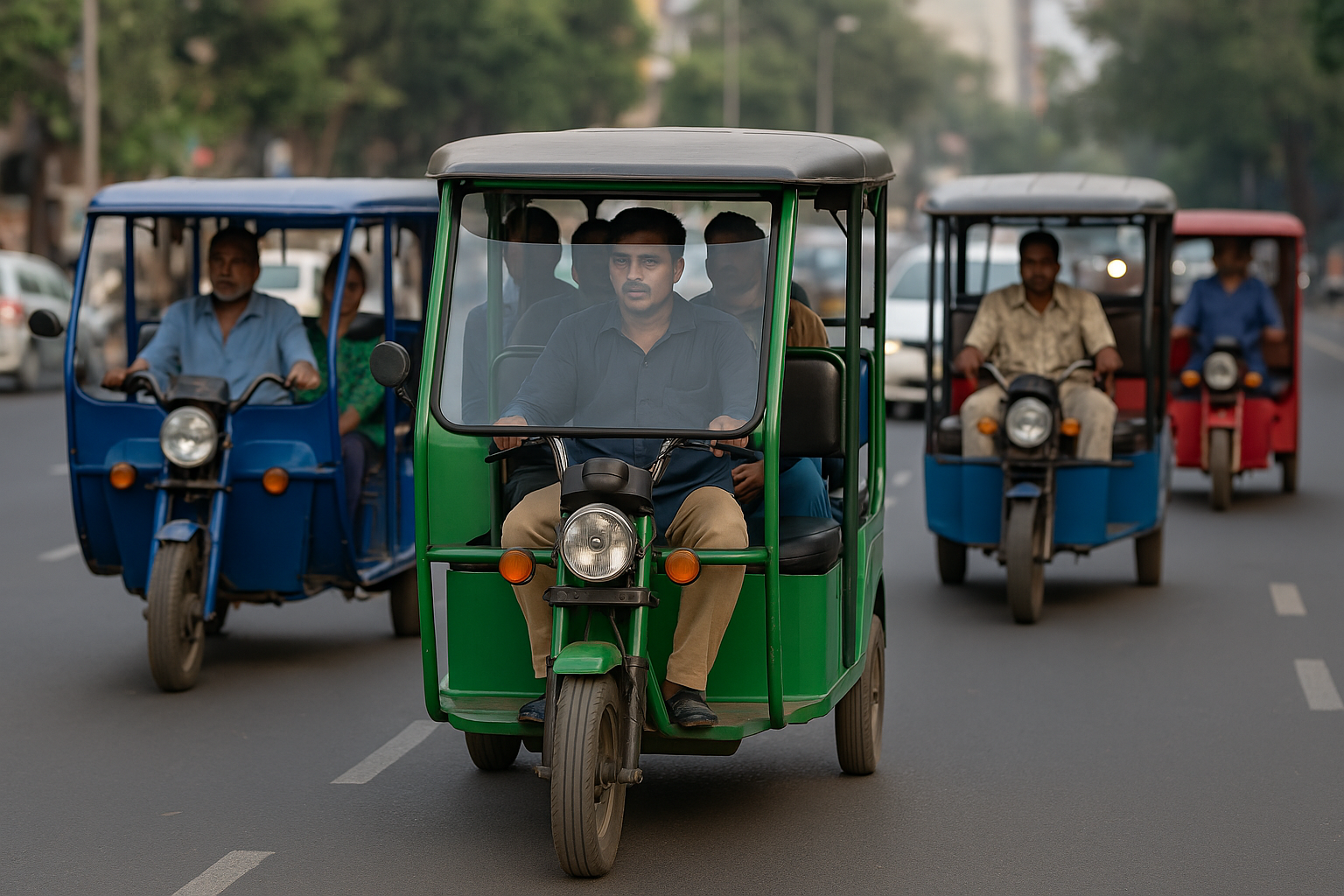E-rickshaw traffic problems in India: Boon for Mobility or a Burden on the Roads?

In recent years, E-rickshaw traffic problems in India—especially in metropolitan areas like Delhi NCR—have witnessed an explosion of e-rickshaws. These battery-operated vehicles were introduced with a noble goal: to provide affordable, eco-friendly, and last-mile connectivity for the masses. But today, as someone who experiences the traffic jungle daily, I can’t help but ask—have e-rickshaws solved more problems or created new ones?
The Promise of E-Mobility
There’s no denying that e-rickshaws have played a transformative role in making transportation accessible. For people living in areas beyond the reach of metro stations or bus stops, these vehicles have been a blessing. They offer cheap fares, flexible routes, and employment opportunities to thousands of drivers from modest backgrounds. E-rickshaw traffic problems in India rising day by day.
They’re also electric—meaning zero emissions, no petrol or diesel dependency, and a lower carbon footprint. So far, it sounds like a win-win. But here’s where the story takes a different turn.
A Daily Struggle on the Roads
On paper, e-rickshaws are a progressive step toward green mobility. In reality, many of them operate without discipline. Every day, I see them clogging intersections, driving against traffic, and stopping anywhere they wish—without any concern for those behind them.
There are moments when reaching home becomes a battle—not because of distance or weather, but because dozens of e-rickshaws are parked haphazardly, blocking roads, driving on footpaths, or taking U-turns in the middle of busy highways.
This isn’t just an inconvenience. It’s a safety risk—for pedestrians, bikers, and even the e-rickshaw passengers themselves.
Why Is This Happening? E-rickshaw traffic problems in India rising day by day.
The core issue isn’t the e-rickshaw. It’s the lack of control, structure, and awareness.
Many of these drivers are not trained. Some don’t even have a valid license or basic understanding of traffic rules. There’s little to no monitoring of their routes, parking spots, or behavior on the road.
Add to that the absence of dedicated lanes or parking bays—and what you get is an urban traffic recipe for disaster.
A Solution That Needs Support
It’s unfair to blame every e-rickshaw or driver. Many of them are responsible, polite, and just trying to make a living. But without a proper system in place, even good intentions get lost in chaos.
Here’s what needs to happen:
- Strict training and licensing for all e-rickshaw drivers.
- Designated pick-up/drop zones to prevent road blockages.
- Fixed routes or limits on where they can operate.
- Regular checks and penalties for traffic rule violations.
- Awareness drives to help drivers understand road safety and etiquette.
Final Thoughts
The e-rickshaw isn’t the villain—it’s a tool. Whether it becomes a bridge to better urban transport or a barrier in daily commuting depends entirely on how we choose to regulate and support it. E-rickshaw traffic problems in India rising day by day.
We need to protect both the environment and the efficiency of our roads. It’s time authorities wake up to this growing issue, before a solution becomes the cause of the problem it was meant to solve.



